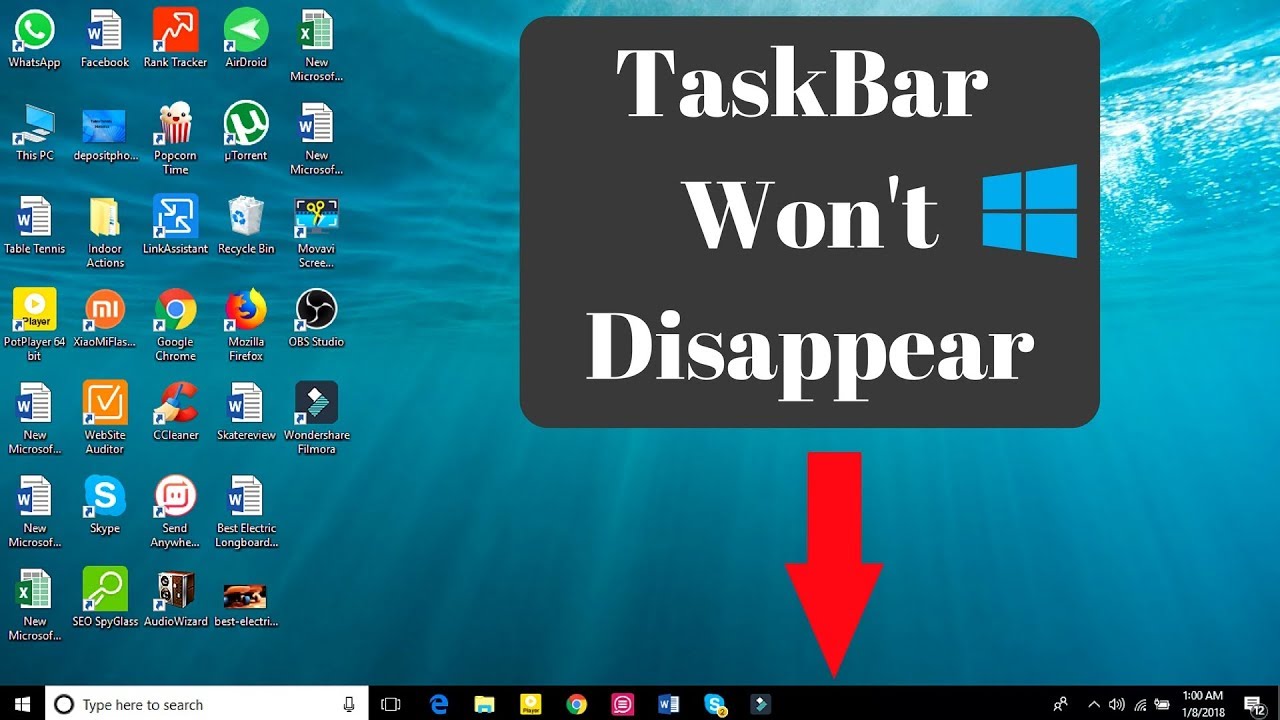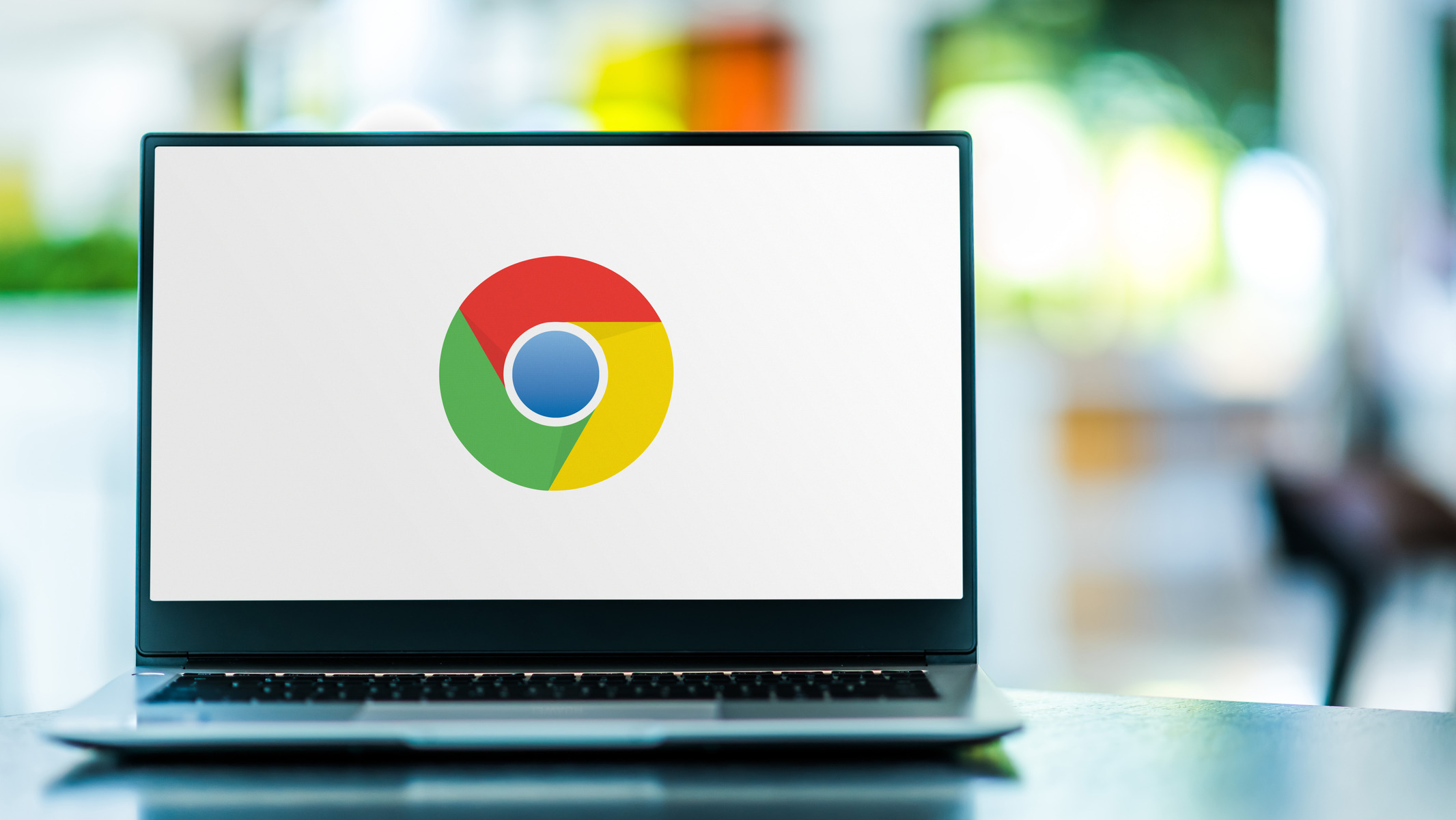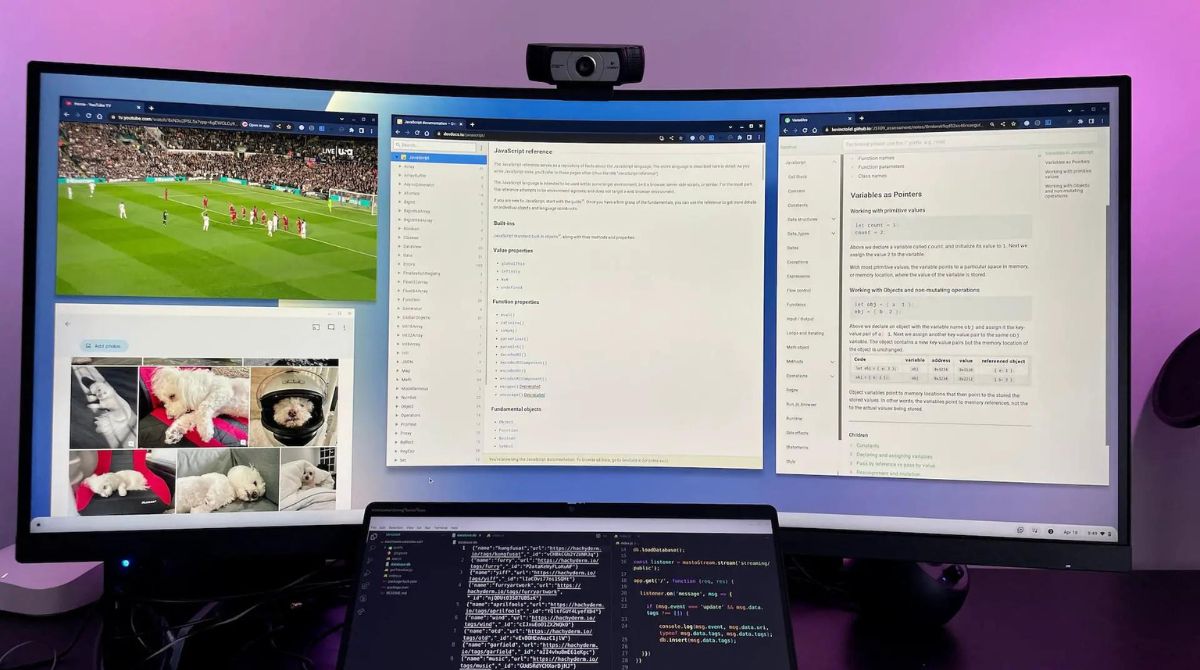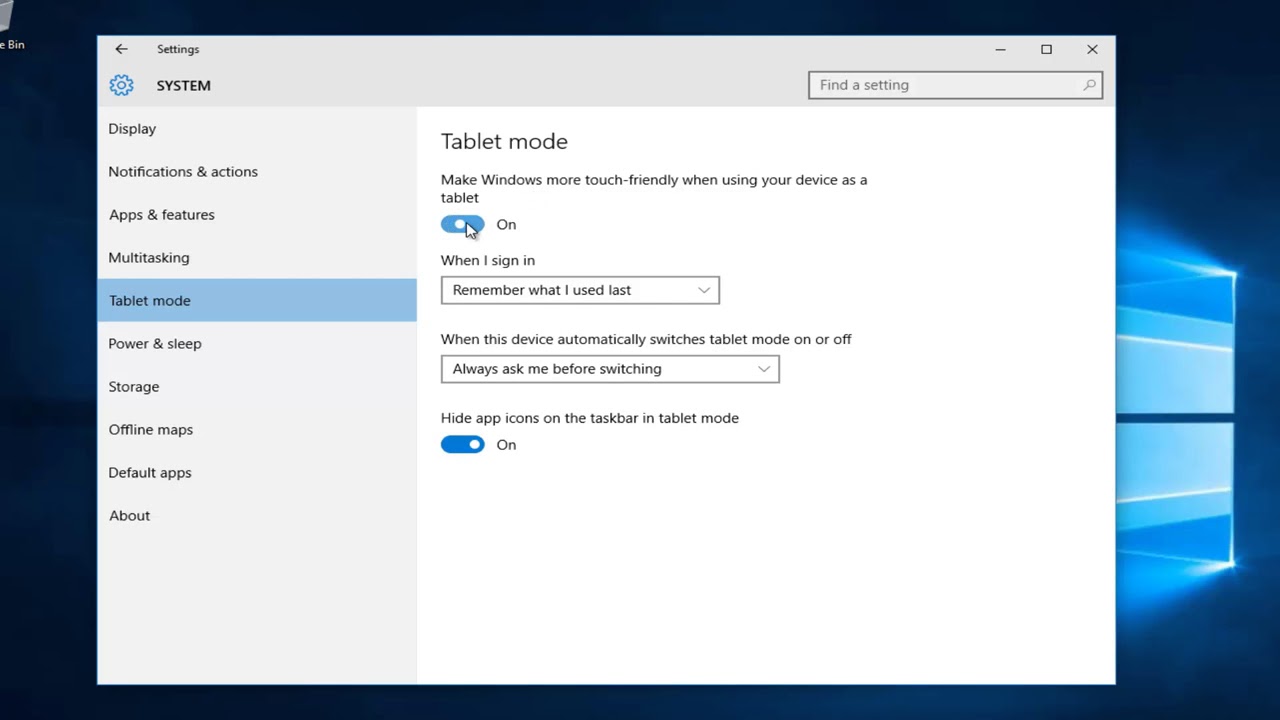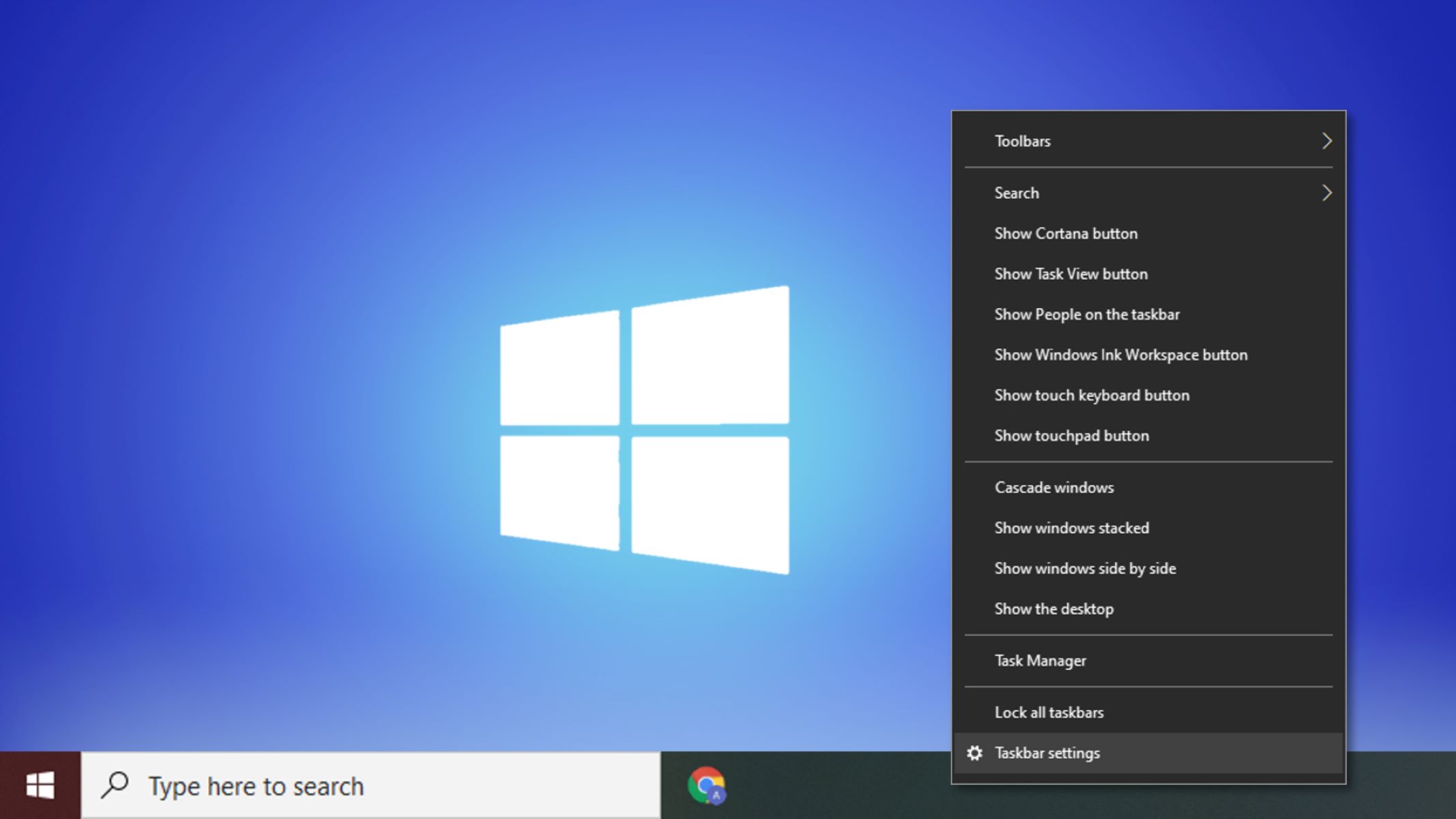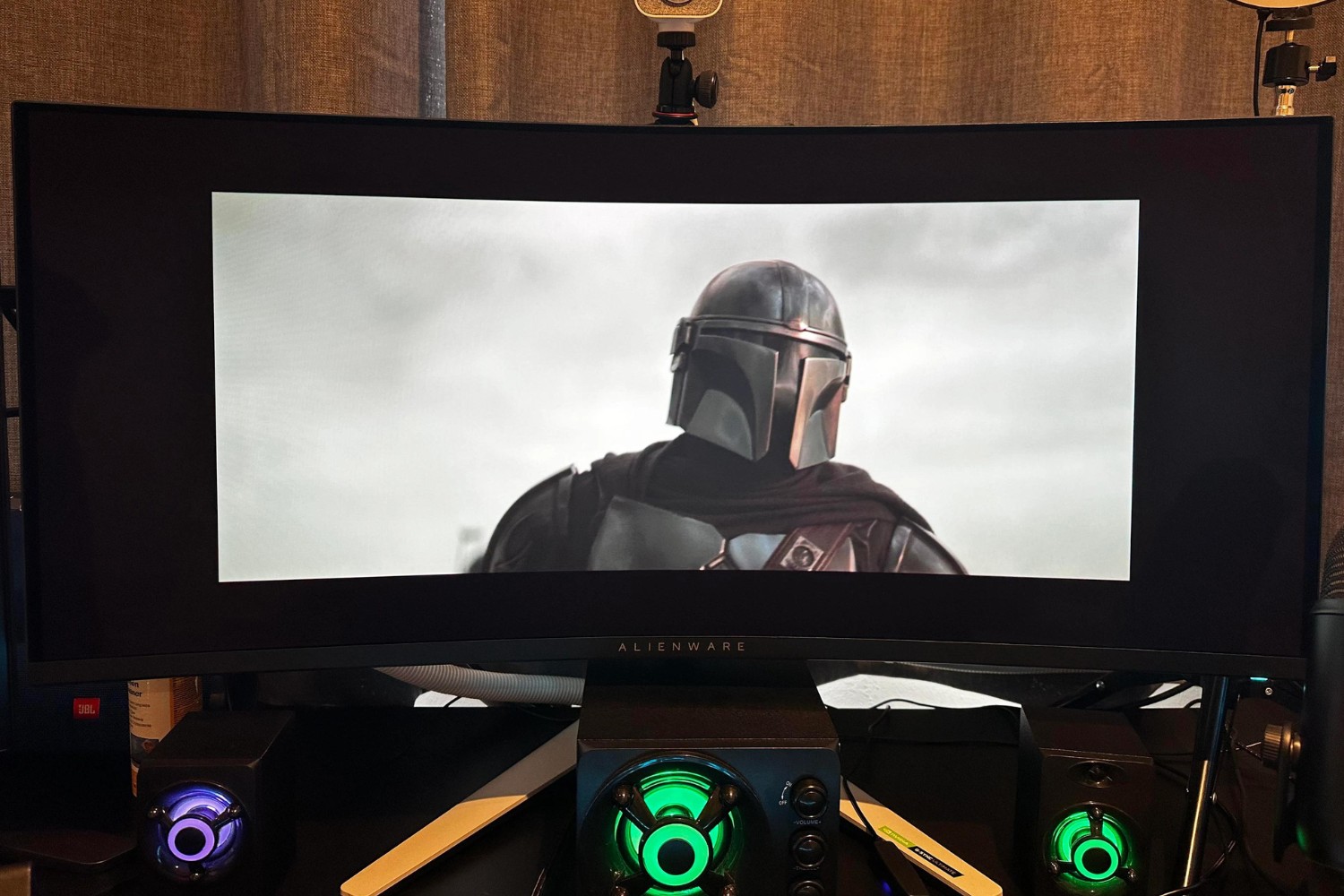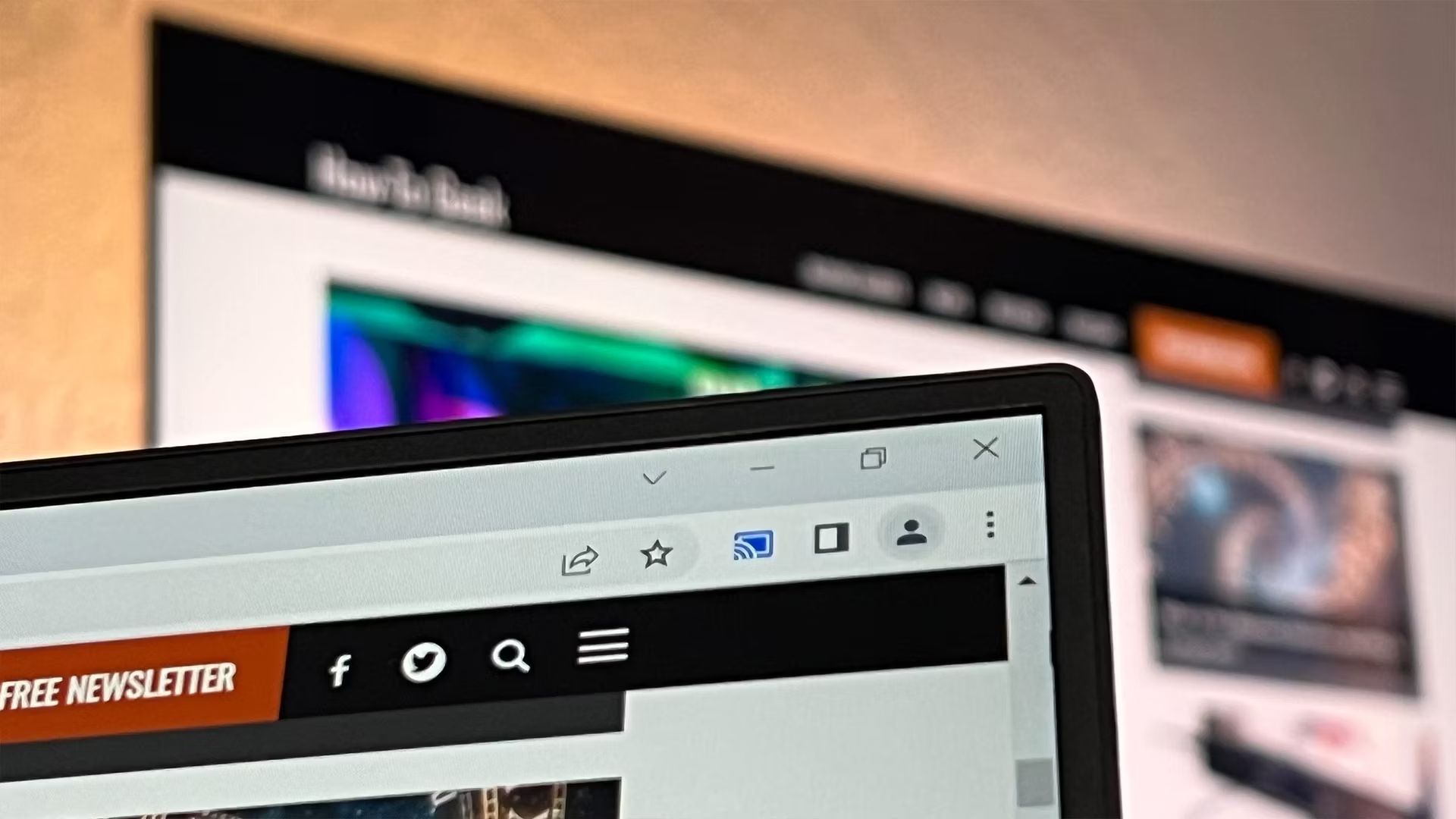Introduction
When you're engrossed in a captivating video or immersed in a thrilling game on Google Chrome, the last thing you want is for your taskbar to stubbornly linger at the bottom of the screen, refusing to disappear. This persistent presence can be quite the annoyance, disrupting your full-screen experience and detracting from your enjoyment. If you've found yourself in this predicament, fret not, for there are several potential reasons behind this issue, along with effective solutions to restore your seamless full-screen browsing experience.
In this article, we'll delve into the common culprits that may be causing your taskbar to defy its disappearing act in fullscreen Chrome mode. From there, we'll explore a range of practical remedies to address this irksome dilemma. Whether you're a seasoned tech enthusiast or a casual user seeking a quick fix, this comprehensive guide aims to equip you with the knowledge and tools to bid farewell to that persistent taskbar and reclaim the immersive, distraction-free browsing experience you deserve.
So, if you've ever wondered why your taskbar seems to have a mind of its own when Chrome is in fullscreen mode, and more importantly, how to remedy this vexing issue, you're in the right place. Let's embark on this journey to uncover the root causes and effective solutions, empowering you to make the most of your fullscreen Chrome experience.
Possible Causes of Taskbar Not Disappearing in Fullscreen Chrome
-
Incorrect Chrome Settings: One of the primary reasons for the taskbar refusing to vanish in fullscreen mode could be misconfigured settings within Google Chrome. This might include an inadvertent alteration to the browser's default behavior, causing it to retain the taskbar display even when in fullscreen mode.
-
Outdated Browser Version: An outdated version of Google Chrome could also contribute to the taskbar visibility issue. Newer updates often contain bug fixes and performance enhancements, including optimizations for fullscreen mode. Therefore, failing to update Chrome regularly may result in compatibility issues that prevent the taskbar from disappearing as intended.
-
Conflicting Browser Extensions: Certain browser extensions, although designed to enhance the browsing experience, can inadvertently interfere with Chrome's fullscreen functionality. Extensions that modify the browser's behavior or alter its appearance may disrupt the taskbar's auto-hide feature, leading to its persistent display in fullscreen mode.
-
System Settings and Configurations: The taskbar's behavior can also be influenced by system settings and configurations. For instance, if the taskbar settings are configured to always remain visible, regardless of the application or window state, this could override Chrome's fullscreen mode settings and prevent the taskbar from disappearing.
-
Graphics Driver Issues: In some cases, outdated or incompatible graphics drivers can impact the behavior of applications in fullscreen mode, including Google Chrome. Issues with the graphics driver may hinder the seamless transition to fullscreen, causing the taskbar to remain visible despite Chrome occupying the entire screen.
-
Underlying Software Glitches: Occasionally, software glitches within the operating system or the Chrome browser itself can lead to unexpected behavior, such as the taskbar failing to disappear in fullscreen mode. These glitches may arise from various factors, including temporary system errors, conflicting processes, or corrupted application data.
Understanding these potential causes is crucial in diagnosing and addressing the taskbar visibility issue in fullscreen Chrome. By identifying the underlying factors contributing to this inconvenience, users can proceed to implement targeted solutions that effectively restore the intended fullscreen browsing experience.
How to Fix Taskbar Not Disappearing in Fullscreen Chrome
Adjust Chrome Settings:
Begin by reviewing and adjusting the settings within Google Chrome to ensure that the browser is configured to enable the taskbar to disappear in fullscreen mode. To do this, access the Chrome settings menu by clicking on the three-dot icon in the top-right corner of the browser window and selecting "Settings." From there, navigate to the "Appearance" section and ensure that the "Always show the bookmarks bar in fullscreen" option is disabled. Additionally, check the "Advanced" settings for any options related to fullscreen behavior and ensure that they are appropriately configured to allow the taskbar to auto-hide when Chrome enters fullscreen mode.
Update Google Chrome:
Keeping Google Chrome up to date is essential for maintaining optimal performance and addressing potential compatibility issues that may affect the taskbar's behavior in fullscreen mode. To update Chrome, click on the three-dot icon in the top-right corner, navigate to "Help," and select "About Google Chrome." This will prompt the browser to check for updates and install them if available. By ensuring that you are running the latest version of Chrome, you can leverage the latest bug fixes and enhancements that may resolve the taskbar visibility issue.
Manage Browser Extensions:
Review the installed browser extensions and disable any that may be conflicting with Chrome's fullscreen functionality. To do this, access the Chrome menu, go to "More tools," and select "Extensions." Disable extensions one by one and test Chrome in fullscreen mode after each disablement to identify if a specific extension is causing the taskbar to remain visible. Once the conflicting extension is identified, consider removing it or seeking an updated version that is compatible with fullscreen mode.
Adjust System Taskbar Settings:
Check the taskbar settings on your operating system to ensure that it is configured to auto-hide in fullscreen mode. For Windows users, right-click on the taskbar, navigate to "Taskbar settings," and ensure that the "Automatically hide the taskbar in desktop mode" and "Automatically hide the taskbar in tablet mode" options are enabled. By enabling these settings, you can ensure that the taskbar behaves as intended when Chrome enters fullscreen mode.
Update Graphics Drivers:
Ensure that your system's graphics drivers are up to date, as outdated or incompatible drivers can impact the behavior of applications in fullscreen mode, including Google Chrome. Visit the website of your graphics card manufacturer to download and install the latest drivers for your specific hardware. By keeping the graphics drivers updated, you can mitigate potential compatibility issues that may be contributing to the taskbar visibility problem.
Reset Chrome Settings:
If all else fails, consider resetting Google Chrome to its default settings to eliminate any potential configuration conflicts that may be causing the taskbar to persist in fullscreen mode. To reset Chrome, navigate to the browser's settings, select "Advanced," and click on "Reset and clean up." From there, choose the "Restore settings to their original defaults" option and follow the prompts to reset the browser. Be mindful that this action will reset Chrome's settings, including extensions and customizations, so it's advisable to back up any important data before proceeding.
By implementing these solutions, users can effectively address the taskbar visibility issue in fullscreen Chrome, restoring the intended immersive browsing experience without the persistent presence of the taskbar. Whether it's adjusting browser settings, managing extensions, or updating system configurations, these targeted remedies empower users to overcome the inconvenience and enjoy a seamless fullscreen experience on Google Chrome.
Conclusion
In the realm of digital exploration and immersive browsing experiences, the persistent presence of the taskbar in fullscreen Chrome can be a vexing impediment, disrupting the seamless enjoyment of captivating content and interactive web applications. However, armed with a deeper understanding of the potential causes and effective remedies, users can confidently navigate the landscape of fullscreen browsing without the encumbrance of an obstinate taskbar.
By delving into the intricacies of Google Chrome's settings, users can fine-tune the browser's behavior to align with their preferences, ensuring that the taskbar gracefully recedes when the allure of fullscreen content beckons. Whether it's disabling the display of bookmarks in fullscreen mode or exploring advanced settings to optimize the browser's behavior, Chrome offers a versatile array of customization options to empower users in reclaiming their fullscreen domain.
Furthermore, the pivotal role of software updates and compatibility cannot be overstated. Regularly updating Google Chrome ensures that users benefit from the latest bug fixes, performance enhancements, and optimizations tailored for the fullscreen experience. This proactive approach not only mitigates potential compatibility issues but also underscores the commitment to a seamless and uninterrupted browsing journey.
The intricate interplay between browser extensions and Chrome's fullscreen functionality underscores the need for discerning management. By scrutinizing and selectively disabling conflicting extensions, users can curate a browsing environment that harmoniously coalesces with the captivating allure of fullscreen content, free from the encumbrances of a persistent taskbar.
Moreover, the symbiotic relationship between system configurations and Chrome's behavior underscores the importance of harmonizing these elements to achieve a cohesive and immersive browsing experience. Whether it's adjusting taskbar settings on the operating system or ensuring the compatibility of graphics drivers, these considerations collectively contribute to the seamless transition to fullscreen bliss.
In the event of persistent challenges, the restorative power of resetting Chrome to its default settings serves as a beacon of hope, offering a clean slate from which users can rekindle their fullscreen escapades without the lingering presence of the taskbar.
In conclusion, the journey to resolve the enigma of the taskbar's persistence in fullscreen Chrome is one defined by empowerment, understanding, and the harmonious orchestration of software, settings, and user agency. Armed with the insights and remedies presented in this guide, users are poised to embark on a renewed and unencumbered fullscreen odyssey, where captivating content reigns supreme, and the taskbar gracefully yields to the allure of immersive digital experiences.







